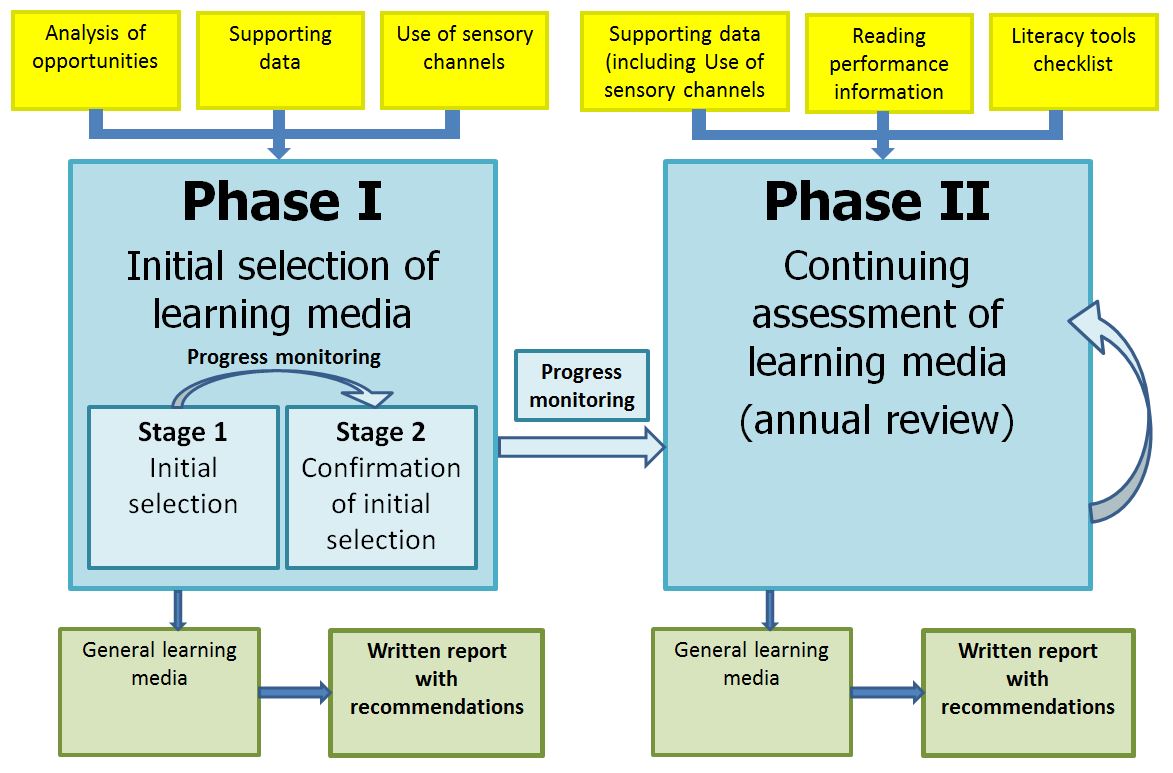Initial selection of literacy medium
Phase I Stage 1 relates to the initial selection of the pupil's literacy medium ie should the child be learning to read and write through print or through braille, or (less commonly) through a combination of print and braille.
Typically this decision will be taken in Year 1 although it will be based on information collected throughout the Early Years.
Collecting information in Phase I Stage 1
The following forms are used to assemble information related to this stage:
Form 1: General Child/Pupil Information
Form 1 will normally need to be completed before each LMA assessment in order to keep it up to date. It will be completed by the QTVI.
Form 2: Use of Sensory Channels
Form 2 is a tool that can be used by members of a learner's educational team to systematically observe sensory responses and behaviours.
While this form is valuable for determining a learner's natural sensory response, it does not necessarily indicate the sensory response that would be most efficient or effective for the learner.
Form 2 will be completed a number of times. Each form will contain the results of observations of the use of the child's senses across a range of tasks in a range of environments, in familiar and unfamiliar settings. A range of people might be involved in form filling including the parents of the pupil. The forms will be collated and summarised to inform later decisions.
Form 3: General Learning Media Checklist
Form 3 will be completed when the child starts at reception class. It collects observations about the pupil's preferred sense for accessing learning materials and what teaching styles the child can access and respond to at a distance and close to.
It will probably be initially completed by the QTVI but will be refined and adapted through discussion with additional observations by the class teacher. It is useful for informing the class teacher about the range of the pupil's sensory capabilities.
Form 4: Early Literacy Acquisition Sensory Skills Checklist
Form 4 is a tool for educational teams to document the child's demonstration of some key skills associated with early curiosity and play behaviour related to reading and writing. This checklist can be helpful for educational teams to examine if a child has had adequate opportunities and reinforcement for using vision, touch and hearing to acquire literacy skills.
